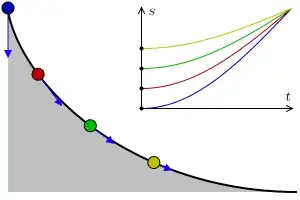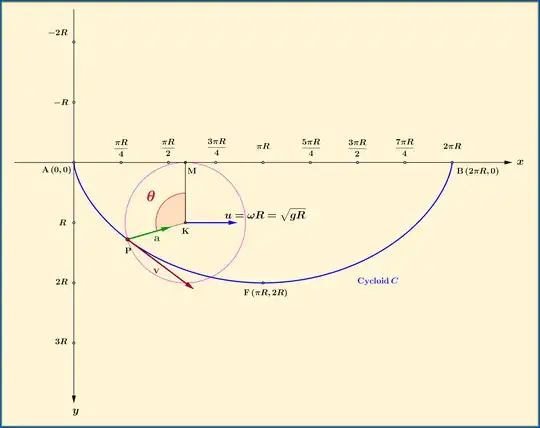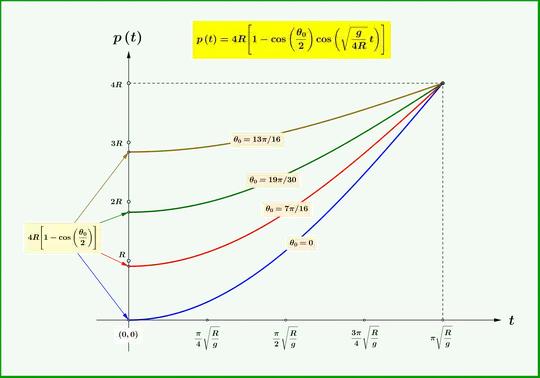In the brachistochrone problem and in the tautochrone problem it is easy to see that a cycloid is the curve that satisfies both problems.
If we consider $x$ the horizontal axis and $y$ the vertical axis, then the parametric equations for a cycloid with its cusp down is:
$$\begin{cases} x=R(\theta-\sin\theta)\\ y=R(\cos\theta-1) \end{cases}$$
A cycloid is the curve of fastest descent for an idealized point-like body, starting at rest from point A and moving along the curve, without friction, under constant gravity, to a given end point B in the shortest time. A cycloid is also the curve for which the time taken by an object sliding without friction in uniform gravity to its lowest point is independent of its starting point.
We already know the parametric equations for the the geometry of the path of the mass, but I would like to know the position of the object over time. I would like to know what is the solution to the equations of motion. It would be like specifying the arc length as a function of time $s=s(t)$ in the figure:

To sum up, what I mean is:
Given certain initial conditions, what are the expressions $x(t)$ and $y(t)$ that give the position as a function of time $\mathbf{\bar{r}}(t)=\left ( x(t),y(t)\right )$ for a particle falling down a cycloid curve?


